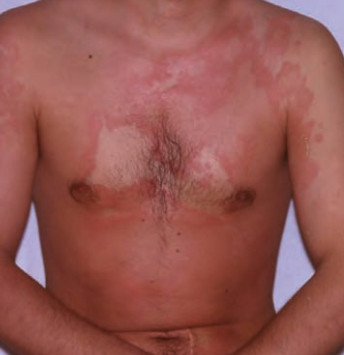Serum sickness and serum sickness like reaction treatment
General tips
- Both of serum sickness and serum sickness like reaction are considered benign and self limited conditions, it usually improves on discontinuation of the culprit agent.
- Identify the causative agent and advise your patient to avoid it as re-exposure to the same agent may induce a severe reaction.
- Most of symptoms will improve within 48 hours after stoppage of the offending drug.
- Most children can be safely treated as outpatients.
- Pateints with severe symptoms and multi-organ affection should be hospitalized.
- Some culprit drugs are life saving and can`t be stopped.
- In case of the above situation, desensitization techniques may be considered under supervision of allergy specialist and also combination of the culprit drug(gradual increasing doses) and glucocorticoids may be tried.

Treatment of mild to moderate serum sickness and serum sickness like reaction(SSLR)
- Antihistamines : for pruritus.
- Non-steroidal anti-inflammatory drugs (NSAIDs) : for fever and joint pain.
Treatment of severe serum sickness and SSLR
- Systemic glucocorticoids
- Prednisone : 0.5 – 1 mg/kg/day for 7- 10 days
- Recurrence of symptoms may occur upon withdrawl of the glucocorticoids.
Pateints with systemic and multiorgan affection
- Intravenous methylprednisolone: 1 to 2 mg/kg per day
- Recurrence of symptoms may occur upon withdrawl of the glucocorticoids.
References:
Rixe N, Tavarez MM. Serum Sickness. [Updated 2022 May 2]. In: StatPearls [Internet]. Treasure Island (FL): StatPearls Publishing; 2022 Jan-. Available from: https://www.ncbi.nlm.nih.gov/books/NBK538312/